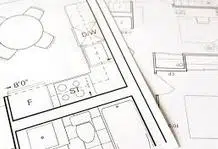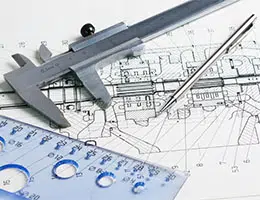 A drawing is a delineation or stroke that is usually done manually with the help of a brush, pencil or other tool with the aim of representing a figure or an idea. Industrial , for its part, is that linked to industry : the facilities and processes that allow obtaining, transforming and marketing natural products or raw materials.
A drawing is a delineation or stroke that is usually done manually with the help of a brush, pencil or other tool with the aim of representing a figure or an idea. Industrial , for its part, is that linked to industry : the facilities and processes that allow obtaining, transforming and marketing natural products or raw materials.
There are multiple types of drawings according to their characteristics. There are freehand drawings , artistic drawings , geometric drawings , technical drawings , architectural drawings, electrical drawings , mechanical drawings and topographical drawings , among others. We can say that industrial drawings are those graphics or plans that provide useful information about a procedure or a device in a sector of the industry.
Industrial drawing allows you to capture ideas and communicate projects through the use of scales, perspectives and various representation techniques . In these drawings, symbols are usually used to facilitate the inclusion of data that is easy to understand for all professionals.
The idea of industrial drawing is linked to the concept of industrial design . Industrial design is called the creative process that allows describing and representing the configuration of an element that can serve to improve the qualities of a product. Industrial design can be carried out three-dimensionally or two-dimensionally .
When industrial design is 3D , we speak of an industrial model : it is an object that occupies a spatial place. Industrial design in 2D is called industrial drawing, which is developed on a plane and combines lines and colors.
Through the development of an industrial drawing it is possible to arrange, gather and combine figures, such as lines, and colors in a flat space with the aim of using them to ornament an industrial product and provide it with a new appearance. Let's not forget that the development of a product has several phases, and that aesthetics is usually one of the last.
Broadly speaking, we can say that the main difference between design and industrial drawing lies in the phase of development at which they point. Precisely, any pattern that is intended to be used to print fabrics, fabrics or laminate materials of a product is included in the set of industrial drawings, with the condition that they can be classified as novel .
 When the process of creating an industrial product begins, it is normal for the manufacturer to focus on the functional aspect of it, on the reason why he has decided to create it. You must find a balance between the characteristics you want to include and the possibilities that the market provides to achieve that goal, which is why the final result does not always correspond one hundred percent to the initial expectations .
When the process of creating an industrial product begins, it is normal for the manufacturer to focus on the functional aspect of it, on the reason why he has decided to create it. You must find a balance between the characteristics you want to include and the possibilities that the market provides to achieve that goal, which is why the final result does not always correspond one hundred percent to the initial expectations .
There is no point in treating the physical appearance before knowing the shape of the product. For this reason, we do not start with all the ornamental details, those that allow the consumer to distinguish it from others without needing to know its functions or main characteristics in depth. While this may seem superficial, and technically it is, in a competitive world governed by economics it is an absolutely necessary point.
Industrial drawing allows you to characterize a product, giving it an aesthetic identity that must be complemented by its design, its features, its technological innovations or its affordable price, among other features.
Some of the issues that the person in charge of the industrial drawing must capture in it are the dimensions of the different parts, the shape and the materials that will be used in manufacturing. This can be achieved through sketches and diagrams.
